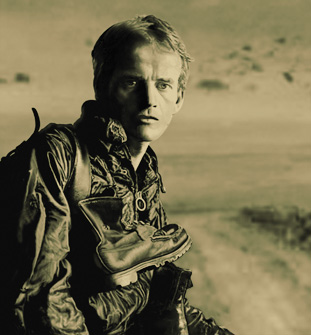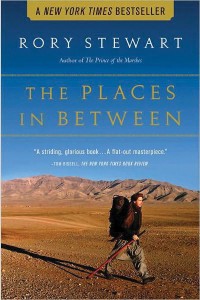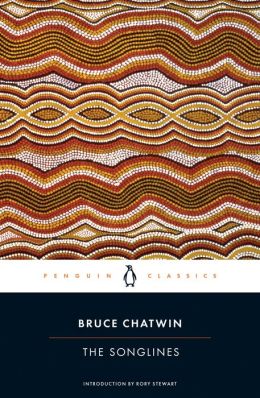Three authors linked by the British tradition of going by foot and writing about it.
A Time of Gifts: On Foot to Constantinople, by Patrick Leigh Fermor.
 A classic of the travel memoir genre, A Time of Gifts is Patrick Leigh Fermor’s account of his trek by foot from the Netherlands to Turkey in 1933-34—though he didn’t write the book until decades later. Published in 1977, the account comprises the first of three volumes. This first and best known installment tracks the initial leg of the journey, which Fermor made when he was eighteen. The plan was to take little else but his knowledge of history, languages (including Greek), a book of Homer’s Odes and a few letters of introduction. Fermor, who died in 2011 at the age of ninety-six, was famously peripatetic, described in his NYT obit as “a cross between Indiana Jones, James Bond and Graham Greene.” Like Hemingway, he had a similar penchant for life abroad and fighting in foreign wars, but the prose style of the two men was poles apart.
A classic of the travel memoir genre, A Time of Gifts is Patrick Leigh Fermor’s account of his trek by foot from the Netherlands to Turkey in 1933-34—though he didn’t write the book until decades later. Published in 1977, the account comprises the first of three volumes. This first and best known installment tracks the initial leg of the journey, which Fermor made when he was eighteen. The plan was to take little else but his knowledge of history, languages (including Greek), a book of Homer’s Odes and a few letters of introduction. Fermor, who died in 2011 at the age of ninety-six, was famously peripatetic, described in his NYT obit as “a cross between Indiana Jones, James Bond and Graham Greene.” Like Hemingway, he had a similar penchant for life abroad and fighting in foreign wars, but the prose style of the two men was poles apart.

Fermor in Greece, 1946.
As Nosey Parker writes in the Toronto Sun, Fermor’s “near-eidetic” memory enabled the memories to steep. Parker compares this journal entry from Fermor’s teenaged years: “Bucharest amazing town … Wandered around ages, soaking it in … Lovely town,” to its published counterpart written forty years later:
The flatness of the Alföld leaves a stage for cloud-events at sunset that are dangerous to describe: levitated armies in deadlock and riderless squadrons descending in slow-motion to smouldering and sulphurous lagoons where barbicans graduallycollapse and fleets of burning triremes turn dark before sinking.
The decades between Fermor’s journey and its writing proved, to say the least, advantageous. A trireme, by the way, is an ancient Greek or Roman war galley with three banks of oars.
The second volume, Between the Woods and the Water (published in 1986) picks up in Czechoslovakia, and follows the trek further east, to the gorge where the Danube separates what is now Serbia and Romania. The final volume, assembled posthumously from Fermor’s diaries and letters, was released in 2013 as The Broken Road: Travels from Bulgaria to Mount Athos, edited by Artemis Cooper.
The Songlines, by Bruce Chatwin
Bruce Chatwin’s tragically short but prolific career has left enduring works. Among them a novel, Utz, shortlisted for the Booker Prize in 1988, and the now classic travel memoirs, In Patagonia (1977) and The Songlines (1987), a hybrid work that traces the Aboriginal creation myth, the songlines—tracks made by ancestors who sang the physical world into existence by naming each thing they saw.
Part creative nonfiction—in the sense of Chatwin’s fictionalization of some aspects of the journey—and part factual and historical data, The Songlines was a hit, not only for its innovative (and often disputed) approach, but for the aura that surrounded the book due to the charisma of its author. Chatwin was famously charming, handsome and brilliant, a literary star who could be elusive and contradictory.
“Proust, more perspicaciously than any other writer, reminds us that the ‘walks’ of childhood form the raw material of our intelligence.”

The Songlines is both a beautiful, and at times frustrating work. Chatwin’s trek through the Australian bush is part investigation, part rumination and reflection. As here:
And it struck me, from what I now knew of the Songlines, that the whole of Classical mythology might represent the relics of a gigantic ‘song-map’: that all the to-ing and fro-ing of gods and goddesses, the caves and sacred springs, the sphinxes and chimaeras, and all the men and women who became nightingales or ravens, echoes or narcissi, stones or stars–could all be interpreted in terms of totemic geography.
Chatwin’s later works include the essays collection What Am I Doing Here and Photographs and Notebooks. He died in England in 1989 of AIDS-related complications, and his ashes were scattered near Fermor’s home in the mountains of southern Greece. In a Paris Review interview published in 2013, Fermor remembered:
When I visited Bruce and his wife, Elizabeth, in Oxfordshire during his last illness, I found him wrapped up in a blanket, his eyes exalted, with a sort of El Greco look about him and bursting with wild ideas. One of these involved my flying a helicopter to meet him at Mount Athos, where, as a first step toward his becoming a monk, I was to sponsor his entrance into the Orthodox Church—this despite the fact that I’m not Orthodox.
Rory Stewart has said, “The publication of Bruce Chatwin’s The Songlines in 1987 transformed English travel writing; it made it cool.” A new twenty-fifth anniversary edition (pictured here) includes an introduction by Stewart.
The Places In-Between, by Rory Stewart.
In 2002, Rory Stewart made a walk across Afghanistan from Herat to Kabul. A scholar of Afghan history and language, he was well grounded the country’s ancient history, and in the grave first years after 9/11, sought to learn “what [Afghanistan] was like now.” Part memoir, part political and cultural history, Stewart (currently a MP in Britain’s House of Commons—and famously the youngest elected to date), was fluent enough in language, and shape shifting enough in his appearance to pass as Afghani, or as The Guardian phrased it, “travelling in disguise through places famous for killing infidels.”
Stewart intentionally retraced an ancient journey made at the start of the sixteenth century by Barbur, First Emperor of Mughal India. As Stewart writes, Herat was one of the most civilized cities in the Islamic World, and at age twenty-two, Barbur was the prince of a poor kingdom in Uzbekistan. He set out to conquer Kabul, and subsequently “pressed on east to conquer Delhi and found the Mughal Dynasty.” Though in the process of going by foot over passes buried under ten feet of snow, Barbur nearly dies, an eerily resonant detail for Stewart’s contemporary retracing.
Stewart’s walk took place soon after the Taliban takeover of the country—and the American military invasion. Beyond the obvious personal risk is the uncertainty of travel by foot—weather, sufficient food, water, shelter. In the course of the journey, Stewart is put up in huts, palaces and abandoned castles, fed sumptuous meals and some that are at best questionable. At times he’s given aid by warlords and village headmen, though his only constant protection is a walking staff with a metal tip. Early on, he comes into possession of giant Mastiff, and names him Barbur. The dog proves to be protection, but mostly a comfort and a complication—given the animal’s changeable attitude about long-distance walks.
Like Chatwin, Stewart’s account is part rumination and reflection, as here, as the recent war puts him in mind of a more familiar landscape “defined by acts of violence and death”:
Places in the Scottish Highlands are also remembered for acts of violence: the spot where Stewart of Ardvorlich shot a MacDonald raider, or where the MacGregors decapitated Ardvorlich’s brother-in-law. Around my house in Scotland the Gaelic place-names record death: “Place of Mourning” or “Field of Weeping.” But here the events recorded were only months old.

In the end, The Places In-Between is a personal story, a chronicle of a worldly exploration whose effect, in the end, is powerfully intimate. In his review of Chatwin’s biography, Stewart quoted a passage in from In-Between:
Most of human history was conducted through contacts, made at walking pace…the pilgrimages to Compostela in Spain…to the source of the Ganges, and wandering dervishes, sadhus, and friars, who approached God on foot. The Buddha meditated by walking, and Wordsworth composed sonnets while striding beside the Lakes. Bruce Chatwin concluded from all these things that we would think and live better, and be closer to our purpose as humans, if we moved continually on foot across the surface of the earth.
—Lauren Alwan

